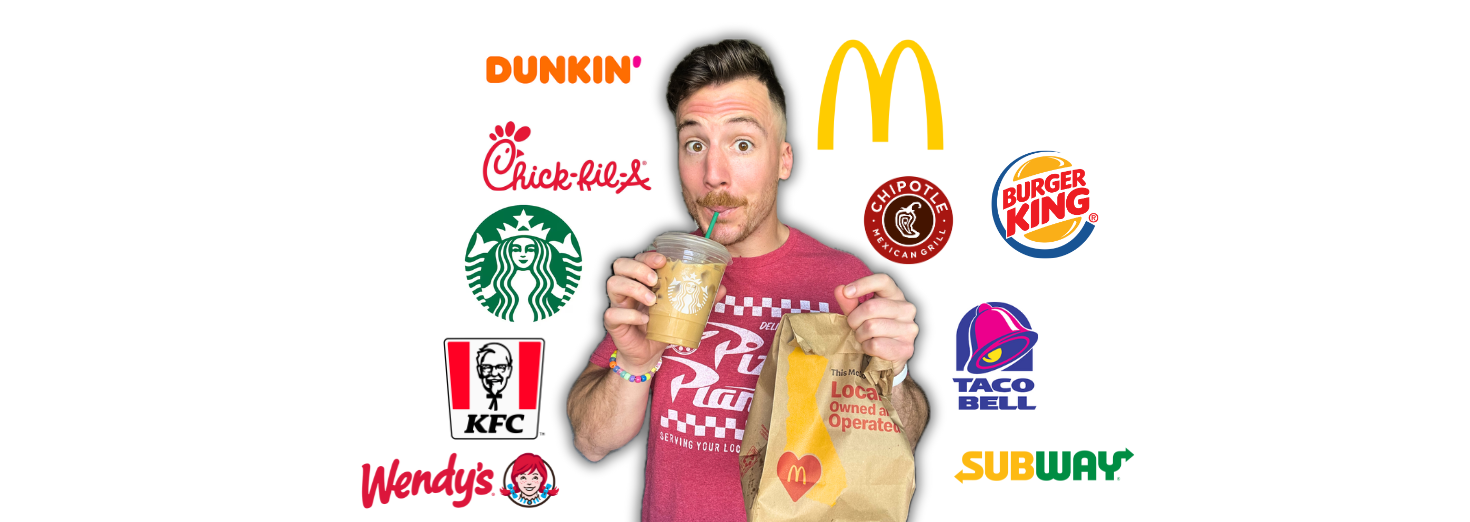This article will provide everything you need to know about increasing your protein intake.
I'll go over why protein is important (especially for fat loss), how much protein you need daily, and how to increase your protein intake.
And at the end, I will give you a list of protein options to take with you and give you some great ideas on what you can have!

Let’s start here.
Protein is arguably the most important macronutrient to consume.
Yet it seems to be the hardest macronutrient for most individuals to get a sufficient amount consumed.
So let’s fix that for you, shall we?
The Importance of Protein
I’m telling you that protein is the most important macronutrient, and you are probably wondering why.
- Protein is the most filling and satisfying macronutrient.
-
- It is going to fill you up and fill you up for a long period of time.
-
- Protein helps build and maintain muscle.
-
- When trying to lose weight, you want to ensure the weight you lose is from your fat tissue, not your muscles. Protein can help you maintain muscle mass and, in some cases, like if you are a beginner, build muscle mass. AND building more muscle means a higher metabolism - whoop whoop!
-
- Protein has the highest thermic effect.
-
- Compared to carbohydrates and fat, protein ends up burning more calories during digestion.
-

How Much Protein Should You Eat a Day?
Here is a simple equation to find your protein target.
Take your goal body weight and multiply by .7 (grams).
For example, let’s say your goal is to weigh 200 lbs. It would look something like this:
200 x .7 = 140 grams of protein
Your goal will be to eat 140 grams (or more) a day. This number will give you your daily protein target minimum. You can always have more, but this is a solid bare minimum to aim for!

READ THIS:
If you notice your current protein intake is currently at 30 grams daily, don’t stress about increasing your intake by 110 grams right off the bat. Instead, if you're at 30 grams, start by increasing it to 50-60 grams. Then, after a couple weeks or month or so of getting consistent with that, increase it to 70-80, then 90-100, and so on, until we eventually increase it all the way up hitting 140!
(Also, if you also want help finding your calorie targets and learn everything about things need to happen in order to lose fat, make sure you go read my Ultimate Guide to Fat Loss!)
Now, let’s get into the good stuff on how you can start to increase your protein intake!
How to Increase Your Protein Intake
1. Have Protein at Each Meal
At each meal, look down at your plate. Is there a protein source on it? Start to make sure you have a protein source at each meal. One thing that works well with my 1 on 1 Fat Loss Clients is that they plan their meals around their protein source. So they pick out your protein source first and create the rest of their meal around there.
2. Have More Protein at Each Meal
Now that you will have protein at each meal, or if you already are, increase the amount of protein you have at each meal.-
-
- Turn 3 ounces of chicken to 5 ounces
- Add an extra half cup of greek yogurt to your parfait
- Add some extra egg whites to your eggs
- Add an extra scoop of protein powder
- Add a couple extra slices of turkey to your sandwich
-

3. Incorporate High Protein Snacks
Start incorporating higher protein snacks into your diet. Add in things like greek yogurt, cottage cheese, beef jerky, or some deli slices.
4. Incorporate a Protein Shake
Eating a lot of protein can end up being a lot of work. Supplement in shake that is about 25-50 grams of protein.
5. Pick Leaner Protein Options
If you notice that it has been a challenge to increase your protein intake because it will impact your calories, switch over your protein sources to be a bit leaner (meaning more protein for similar, or fewer, calories). Get:-
-
- 95% lean ground beef vs. 80% lean ground Beef
- Fat-Free Greek Yogurt vs. 5% Fat Greek Yogurt
- Chicken Breast vs. Chicken Thigh
-
6. Sneak Protein In
Similar to adding more protein to each meal, start to sneak in some additional protein into your meals or snacks.
-
-
- Add egg whites to your eggs
- substitute greek yogurt vs. sour cream on Taco Tuesday
- Add greek yogurt or cottage cheese to your pasta dish
- Add in protein powder, egg whites, or greek yogurt into a shake or your oatmeal
-
7. Plan Out Your Days in Advance
In my opinion, this is the best approach and the most helpful. Track out your whole day of eating in advance and then check to see where you are at with your protein intake. From there, if you need to, you can start to make adjustments and see where you can make my substitutions or add more protein to the day.
There you have it, everything you need to know about protein.

I hope there are some solid takeaways that you can put into action here.
I know this will feel different and can be a challenge at first with not being used to eating so much protein, but keep practicing and stick with it, and you will get there!
If you need anything, don’t be afraid to shoot me an email at KPD@kpd.fit, and I will get right back to you.
And if you are interested in potentially working together, click HERE to apply, and we will set up a time to chat to see if we would be a good fit together!
I’ll see you soon! 🙂
- Kevin
As I Am
PS: I didn’t forget ... here is a link you can take with you with a list of phenomenal protein options!




SUBMIT YOUR COMMENT